Learning Japanese in 2025
Introduction
There are a ton of guides, tools, and resources for learning Japanese. Many of them are fantastic and broadly useful to all learners, others are more situational and may not be right for everyone, others still are largely ineffective and probably worth avoiding.
Unfortunately, the very advantage of the modern era of easy access to information and tools becomes a detriment when you're wading through a sea of competing methods, books, and learning tools.
While there are some amazing language communities out there, people in the language learning space can be very opinionated and a lot of the discourse ends up being very rigid and without nuance.
So, that gets me to the main question of this introduction; why should you listen to me about learning Japanese?
Well, what I'm not is an expert at Japanese nor a professional in teaching or language learning. However, I have been learning Japanese for some time now and I've done a lot of both research and trial-and-error on how to learn a language.
Unlike many others with language learning guides, I don't sell any sort of language learning products or services, nor do I believe in a single, rigid curriculum that everyone must follow.
My goal with this post is to provide a summary of best practices, recommended tools, and helpful resources, while also addressing some of the nuance that is often missed in all the bluster of language learning communities.
Considerations before you start
One of the most important things to know and to keep in mind when learning a language is that it's a marathon and not a sprint. Even though the methods and tools I'm going to outline can significantly improve your progress, language learning is something that happens with years of consistent effort, not days or weeks.
Another important consideration is that consistency is extremely important. While it's not the end of the world if you miss a day here or there, you have to work hard to study daily as much as possible.
If you're aware of these things going in, it'll be much easier to understand many of my suggestions going forward.
Motivation
“You're three sections into this article and you still haven't actually talked about learning Japanese!”
I know you're probably eager to just download some software and some learning material so you can get started right away, but this is probably one of the most important sections of this whole guide!
This is a topic that only a few guides really highlight, but I think it's extremely important. Remember in Considerations before you start when I mentioned that language learning is a marathon? Well, motivation is the fuel you need to keep going!
If you are not enjoying the process of learning Japanese it's going to be much, much more difficult to keep doing it consistently over the long term.
Throughout this guide, I will
The Roadmap
Okay, on to the actual Japanese learning advice! I call this section The Roadmap because it's meant to give you a high-level view of the stages of learning Japanese.
To learn how to actually use a language, you'll need a way to learn vocabulary and grammar, as well as a way to practice the core skills like listening and reading. Of course, everyone's goals are different and you may be thinking “all I want to do is learn to speak”.
Having that as your primary goal is absolutely fine, but be aware that fundamental language skills are complimentary—practicing your reading does help improve your speaking, for example—and some of them are simply necessary if you want to unlock all of the amazing tools for learning.
…
Learn your Japanese ABCs
I have good news and bad news.
The bad news? Japanese has three different writing systems. Two that are similar to an alphabet, and another one that's borrowed from Chinese which has thousands of characters. All three are used together to write Japanese.
The good news? If you approach them the right way, they're a lot less scary than they sound! It's actually not too hard to learn the important parts up front and then progress will be steady from there—it will take time, but it doesn't have to be difficult.
Luckily, the place to start here is largely undisputed. You need to learn the ABCs of Japanese, so you need to learn hiragana and katakana.
There are many different ways to learn hiragana and katakana. Since this actually won't take you very long—with the right tools you'll likely be comfortable with them after a few weeks, give or take—the method you use isn't actually that important, but I'll give you my current recommendation and explain why I think it's a good option.
In the following sections, we'll go over effective ways to get over these first two hurdles!
Learn the Kana
The first two writing systems you'll learn in Japanese are hiragana and katakana and, like the latin letters used to write English, they represent well-defined sounds.
While you can certainly learn hiragana and katakana by simply looking them up and writing them dozens of times, there are more effective ways to learn them using desktop and/or mobile software.
My recommended tool is Kanji Dojo. You can download it from github for Linux, mac, windows, and android. It's also on the google play store.
Don't be confused by the name of the app, and the fact that you are about to learn kana and not kanji, this free app does a number of things that make it a great choice for learning hiragana and katakana:
- it's free and open source
- no ads, no gimmicks
- uses spaced repetition (more on this shortly)
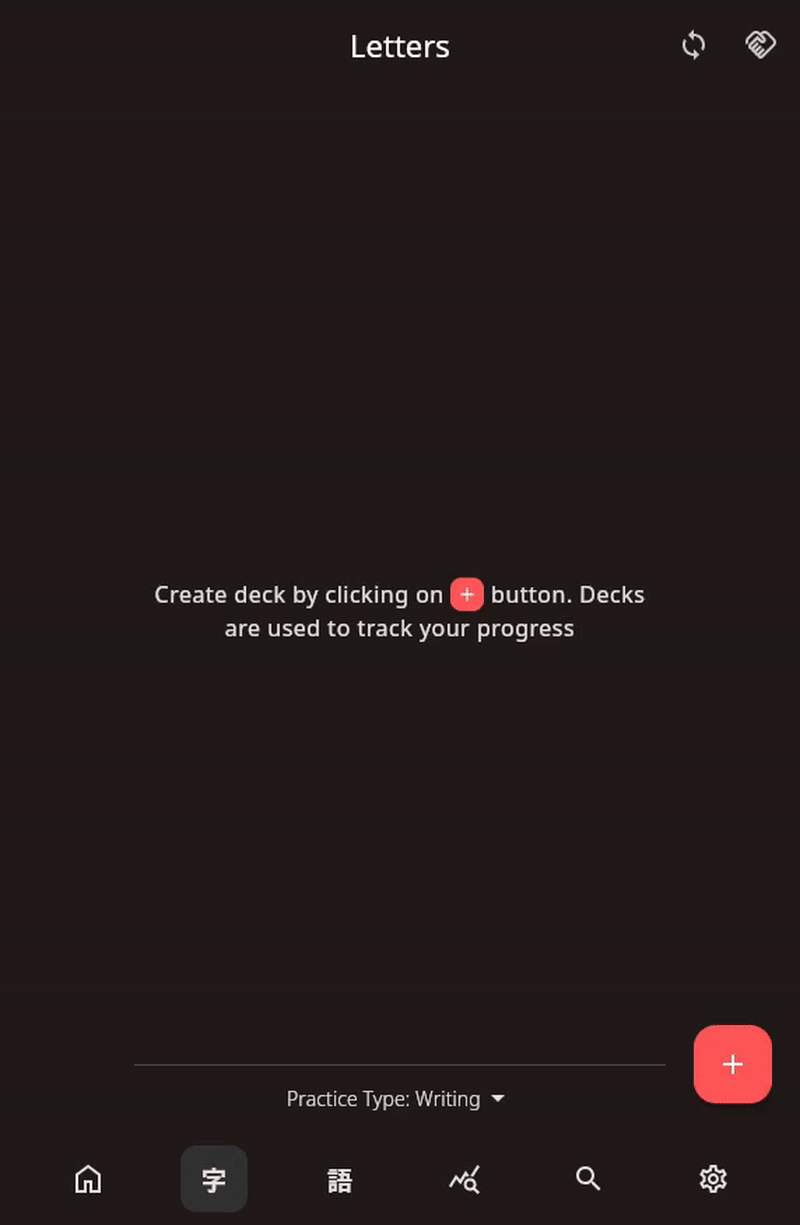
Kanji Dojo makes it easy to create study both hiragana and katakana. It uses 'spaced repetition', so it tries to show you a card just before you're about to forget it. Each time you get an answer correct, it'll increase the interval at which it'll show it to you again. This is great because it matches how your brain actually retains information long-term.
You don't have to worry too much about the science of it, but just remember this big advantage; with spaced repetition, you don't have to review every single character every day. You just review the ones which are 'due'.
My recommended practice mode for kana is 'writing' mode (the default mode). Each time a card is shown to you, it will play you a sound of the kana being pronounced—you can click on the play button to hear it again—and you need to draw the correct character. If it's a new card being shown to you the first time, it'll show you the character at the top of the screen and provide guide strokes.
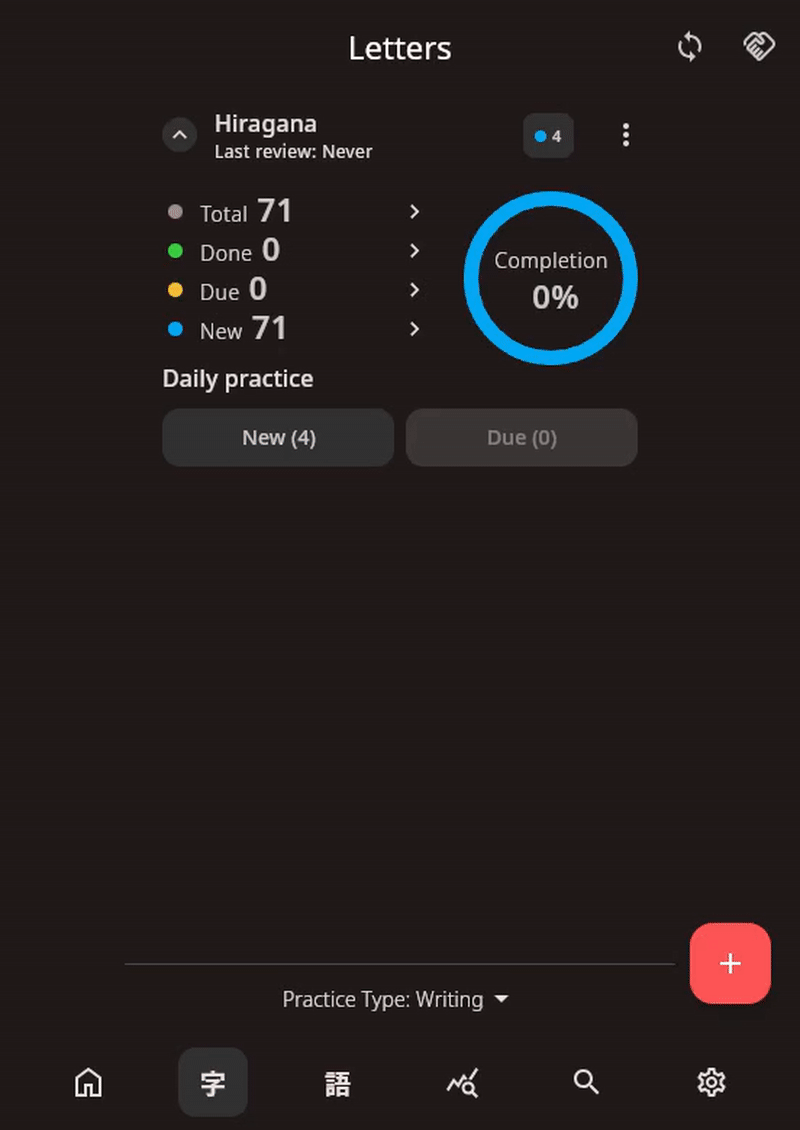
Each time you finish drawing a kana, you'll be asked to grade yourself. Don't worry about being perfectly accurate with your grading, but here's the rough metric I use:
| Grade | Judgement |
|---|---|
| Easy | You were able to instantly recall the character and draw it without any real effort. |
| Good | You were able to quickly recall and draw the character. |
| Hard | You were able to draw the character but it took a lot of thinking. |
| Again | You couldn't recall the character or made mistakes when drawing it. |
Two quick notes on grading:
First, don't worry too much about the judgement, you can just go with your instinct. If you're a bit too generous or a bit too strict, it'll all even out over time as you do further reviews.
Second, don't worry about input errors. The important thing is that you remember how the character looks, not whether your mouse or finger slipped when drawing the character.
Get a feel for Kanji
What are kanji?
You may remember that I mentioned there are three writing systems in Japanese. The third is kanji.
Kanji are logographic symbols borrowed from China. Unlike hiragana and katakana, they don't simply represent distinct sounds. Each character represents some sort of idea or meaning.
There are thousands of kanji—at least 50,000, but probably more—although many of them are very rate. The Japanese government has a list called the Jōyō kanji—containing 2,136 different kanji—which are every-day, regular-use kanji.
To be literate in Japanese, you'll eventually need to learn these. Of course, this probably sounds pretty overwhelming right now.
Luckily, we don't need to memorize these all at once without any context the way we did with hiragana and katakana.
While there are some words that are made with a single kanji, it's important to remember that kanji are not words. It's similar to how English has 'a' and 'I'. Japanese has some specific words that are written with one kanji, but kanji themselves are components of words and most Japanese words are spelled with multiple characters.
That's why I prefer to think of kanji as 'segments' or 'chunks' of a word, and thinking that way is likely to make it obvious why so many people—myself included—recommend learning whole words rather than memorizing all of those kanji by themselves.
If you memorized the whole set of Jōyō kanji you wouldn't know 2,136 words, you'd know 2,136 and wouldn't be able to read or say much of anything. Imagine trying to learn English by memorizing common chunks of words like 'ing' and 'pre' and 'ough'. You could learn thousands of those common parts and still not know any useful amount of the language.
So, how do you learn kanji? Well, now that you know the kana, you can start learning whole words in much the same way as a Japanese person would.
Almost all Japanese learning resources—even native Japanese resources—will use the kana as a guide for pronouncing kanji.
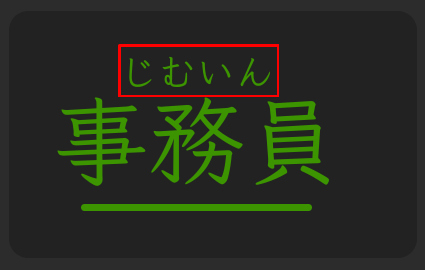
As you learn words, you'll natural start to learn the various kanji that they're made up of. To go back to the comparison to English which I made before, if you learn words like 'hiking', 'fishing', and 'dancing', you'll naturally start to pick up and understand the English use of 'ing'. It's similar with kanji.
You'll gradually start to pick up the different ways each kanji can be pronounced and their general meaning, and all the while you'll be learning actually vocabulary rather that you can use!
Japanese Kanji Primer
So, now that you understand why it's best not to try to memorize kanji in isolation…it's time to memorize some kanji in isolation.
Okay, bear with me for a moment.
If you don't already have experience with Chinese characters, you're likely to find that looking at kanji and making any sense of the shape of them can be quite difficult at first.
While kanji are generally much, much easier to learn and remember as part of a word, many of us will need a little bit of a primer to help us get going with learning them.
Kanji are not all completely unique shapes. In fact, mercifully, they are very heavily built out of common, reused shapes!
In many cases, these common shapes will be smaller—sometimes slightly squished or modified—versions of other kanji. In other cases, these are shapes that you won't see on their own, but you'll see them in many kanji with similar meanings.
These components are called radicals and these are how you can look at even very complex characters and quickly identify them.
In the below example despite having 8 strokes, the kanji is made up of three common components.
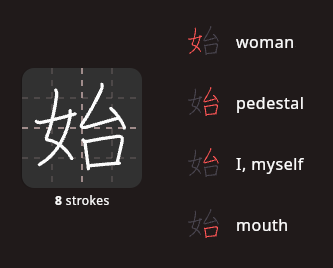
Once you can start seeing the components of kanji you'll have a much easier time learning to identify them. So how can you prime yourself to start dissecting kanji this way? By learning the most common kanji and kanji radicals, of course!
We're able to take advantage of some of the amazing free and open-source resources available online and jump right into a tool that you'll also be using later for learning vocabulary: Anki.
Like Kanji Dojo, Anki is a spaced repetition tool. It's a very powerful digital flashcard application. For now, we won't dive into any complicated settings, simply install Anki on your computer—or a compatible Anki mobile application like Ankidroid—and then head over to Japanese Kanji Primer.
Japanese Kanji Primer is a set of two Anki flashcard decks with the 50 most common kanji radicals and 50 most common kanji. It uses a multiple-choice system, so just mark the card as 'again' if you get it wrong or 'good' if you got it right.

These two decks shouldn't take you very long at all, but I've found they make a meaningful impact on how you look at kanji and should give you a good foundation to start from as you go into learning vocabulary!
Familiarize yourself with pitch accent
As you learn hiragana and katakana, you'll start to understand most of how Japanese is pronounced, the actual sounds, but Japanese also adds stress to a certain part of each word.
Unlike English, which makes one part of a word a bit louder and a bit longer—stress accent—Japanese is what's called a “pitch accent” language. The pitch rises or falls in a specific way to accent the word. You'll also hear this called intonation.
Good pitch accent is generally not totally necessary to be understood—the same way a native English speaker can understand a non-native English who emphasizes the wrong syllable in English words—but it is a key feature of the language.
Pitch accent or intonation can be difficult to master as each word has an accent pattern but the patterns can change when put in a sentence or even just for expressive reasons.
To make things more difficult, pitch accent can often be difficult for people to hear if their native language doesn't use pitch accent or tones! Native Japanese speakers often speak with a very minor difference between low and high pitch.
Luckily, you don't need to have perfect intonation to be understood. Many people speak rather good Japanese aside from their poor intonation and are able to communicate well.
It's up to you how much you want to focus on pitch accent and intonation, but one thing I strongly recommend is familiarizing yourself with what pitch accent is and training your ear to hear it. That way you'll be able to pick up a lot of it naturally as you being to learn vocabulary and listen to Japanese content.
The Kanshudo definitive guide to Japanese pitch accents
There are lots of great resources out there, but my current recommendation is to check out The Kanshudo definitive guide to Japanese pitch accents. The guide gives you an overview of the different accent patterns with plenty of audio examples.
Don't feel like you need to memorize the guide, just make sure you largely understand it as you read it, listen to the examples, and refer back to it if you ever need a refresher.
Minimal Pairs training
Now that you know what pitch accent is, it's time to train your ear to hear it effectively. If you come from a language with pitch accent like Swedish or Turkish, you'll likely find you can immediately tune in to even very subtle changes in pitch in spoken Japanese. For the rest of us, a little bit of ear training will go a long way.
Despite being musically inclined, I found that I was unable to easily hear the subtle pitch changes which often occur in spoken Japanese. Sometimes educational material will exaggerate this—and some native speakers do have a less monotone way of speaking—but in the real world you will regularly encounter Japanese spoken with relatively subtle changes in pitch.
Again, open-source software comes to the rescue!
Kuuuube's open-source implementation of the Minimal Pairs test can either be downloaded and run it from your computer (see: local server usage or simply by visiting kuuuube.github.io/minimal-pairs.
How does it work? It'll play you an audio clip of a word and presents you with two words which are pronounced the same way aside from the difference in pitch accent; a so-called 'minimal pair'. You simply click a button to indicate which one you think you heard.
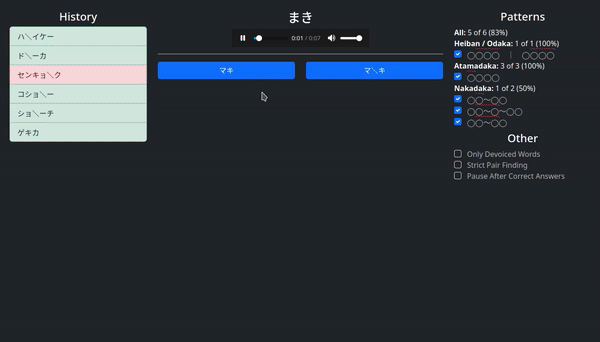
It's that easy.
I recommend doing 5-10 minutes a day. You should do this after you learn hiragana and katakana. You don't need to know what the words mean—you're just focusing on hearing the pitch accent—but you need to be able to phonetically read the answer buttons.
Once you get to the point where you can regularly maintain 90-95%+ correct, you're good to go.
Learn some Japanese Words and Grammar
While you obviously need to start with your ABCs, learning words and how to put them together is where things actually get interesting.